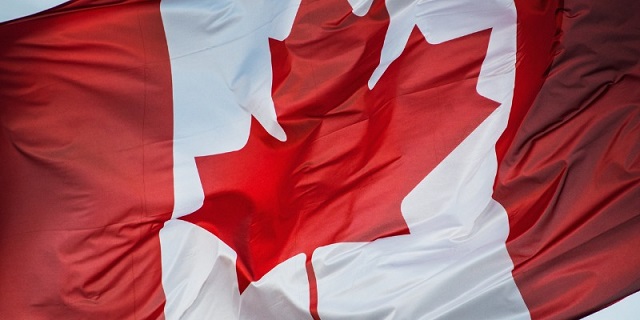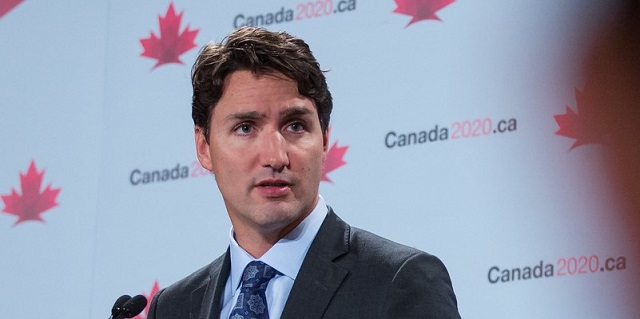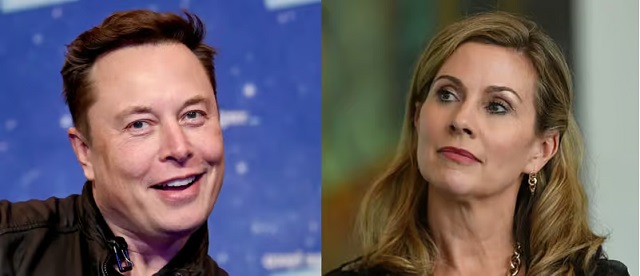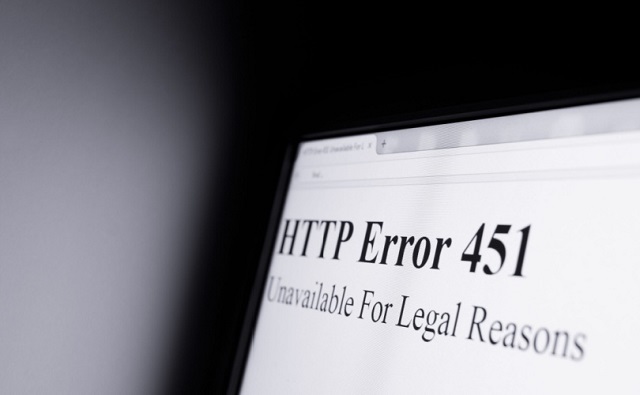Economy
24 facts for 2024—Canadians should understand impact of government policies

From the Fraser Institute
With a better understanding of the impact of government policies, Canadians will be better able to hold politicians accountable and make informed decisions at the ballot box. With the calendar now turned to 2024, here are 24 facts for Canadians to consider.
Canada’s Economic Crisis
- Average per-person incomes in Canada have stagnated from 2016 ($54,154) to 2022 ($55,863). Meanwhile, the United States has seen an increase from $65,792 to $73,565. The average Canadian now earns $17,700 less annually than the average American.
- Canada ranks just below Louisiana ($57,954) in average per-person income and slightly ahead Kentucky ($54,671). Is this the company we want to keep?
- According to the Organisation for Economic Co-operation and Development, Canada will be the worst-performing advanced economy from 2020 to 2030 and from 2030 to 2060.
- Canada’s economic growth crisis is due in large part to the decline in business investment. Business investment per worker in Canada declined by 20 per cent since 2014, from $18,363 to $14,687.
- In 2014, Canada invested about 79 cents per worker for every dollar invested in the United States—in 2021, investment was 55 cents for every U.S. dollar.
- We’ve witnessed a massive flight of capital from Canada since 2014, to the tune of more than $285 billion.
- From the onset of the COVID recession in February 2020 to June 2023, the number of government jobs across the country increased by 11.8 per cent compared to only 3.3 per cent in the private sector (including the self-employed).
Fiscal Crisis: Imprudent Spending and Massive Deficits
- The Trudeau government has increased annual spending (not including interest payments on its debt) by nearly 75 per cent since 2014, from $256 billion in 2014-15 to a projected $453 billion in 2023-24.
- With federal spending at nearly $11,500 per Canadian, the Trudeau government is on track to record the five highest levels of per-person spending in Canadian history.
- A large portion of government spending in Canada goes to pay for the 4.1 million federal, provincial and local government employees. Government employees across Canada—including federal, provincial and municipal workers—are paid 31.3 per cent higher wages (on average) than workers in the private sector. Even after adjusting for differences (education, tenure, type of work, occupation, etc.) government employees are still paid 8.5 per cent higher wages.
- The Trudeau government has used large increases in borrowing and tax increases to finance this spending. Federal debt has ballooned to $1.9 trillion (2022-23) will reach a projected $2.4 trillion by 2027/28.
- Combined federal and provincial debt in Canada has nearly doubled from $1.18 trillion in 2007/08 (the year before the last recession) to a projected $2.18 trillion this year.

Tax Increases and Canada’s Affordability Crisis
- To pay for all this spending, the total tax bill for the average Canadian family was $48,199 or 45.3 per cent per cent of its income—more than what the average family spends on housing, food and clothing combined.

- Housing and grocery costs dominated the news last year but in 2022 the average family spent $1,452 more on housing and $996 more on food while governments extracted an extra $4,566 from the average family in taxes.
- While the federal government has claimed it “cut taxes for middle-class Canadians everywhere,” in reality 86 per cent of middle-class families in Canada are paying higher income taxes under the government’s personal income tax changes. And that doesn’t account for carbon taxes, etc.
- More than 60 per cent of lower-income families (those in the bottom 20 per cent of earners) in Canada now pay higher federal income taxes because of the federal government’s tax changes.
- Seventy-four per cent of Canadians surveyed believe the average family is being overtaxed by the federal, provincial and local governments.
Damaging Energy and Environment Policy
- In the federal government, there’s a common belief that the Canadian economy is undergoing a fundamental and rapid transition towards “clean/green” industries. Yet despite massive regulations and subsidies, Statistics Canada data shows that Canada’s “green” economy amounts to only about 3 per cent of gross domestic product (GDP) and directly employs roughly 1.6 per cent of all jobs.
- The recent United Nations climate change conference pushed for a “transition away from fossil fuels.” Despite significant spending on “clean energy”, from 1995 to 2022, the amount of fossil fuels (oil, gas and coal) consumed worldwide actually increased by nearly 59 per cent.
- Canada has an opportunity to serve the world with its energy and resources and, in doing so, benefit our allies and improve both world energy security and the environment. But the federal government doesn’t see it that way. How else could one explain the latest singling out of Canada’s oil and gas sector through an arbitrary cap on greenhouse gas emissions, even though the sector only represents 26 per cent of Canada’s total GHG emissions? Even if Canada eliminated all greenhouse gas emissions expected from the oil and gas sector in 2030, the reduction would equal only 0.004 per cent of global emissions while imposing huge costs.

- As a result of new federal energy efficiency regulations, the cost of a newly constructed home in Canada will increase by $55,000, on average, by 2030 because of the federal government’s stricter energy efficiency regulations for buildings. Rather than increasing the costs of new homes, governments should help close the gap between supply and demand.
Our Failing Health-Care System
- How good is our health-care system? Canada’s average health-care wait times hit 27.7 weeks in 2023—the longest ever recorded and nearly 200 per cent longer than the 9.3 weeks in 1993 when the Fraser Institute began tracking wait times.
- Among a group of 30 high-income countries that have universally accessible health care, Canada spends the most money on health care as a percentage of GDP.
- Despite this high spending, we are a poor performer. Among this group, Canada had the longest wait lists and ranked:
- 28th (out of 30) for the number of doctors
- 23rd (out of 29) for the number of hospital beds available
- 23rd (out of 29) for the number of psychiatric beds available
- 25th (out of 29) for the number of MRI machines
- 26th (out of 30) for CT scanners
Author:
Brownstone Institute
Enough With These Dangerous Calculations

From the Brownstone Institute
BY
Now that there is more open talk about vaccine injury, we are continually assured that overall these vaccines were worth it even so. The thought always occurs: it has not been worth it for the injured. Nor is their injury lessened by the knowledge that others were helped, if they were.
What precise metric are we going to use to determine costs and benefits population-wide? Many millions were forced to take experimental injections that they did not want nor need. Many were injured and with no chance of compensation. This is gravely unjust. You don’t need to take recourse to fancy philosophical conjectures (The Trolley Problem, The Lifeboat Dilemma, The Fat Man on the Bridge, etc.) to do the utilitarian calculation.
And yet, such calculations are precisely what the defenders of society-wide pandemic interventions are citing as evidence that we can and should do it again. The costs are high, they now admit, but worth the benefit.
Well, maybe not. It’s hard to say but they will keep working on it. They will decide in due course.
This is the argument of Professor John M. Barry. His book on the 1918 flu pandemic kicked off the entire pandemic-planning industry once George W. Bush read the book flap in 2005. Barry’s new article in the New York Times raises alarms about the Avian Bird Flu, the same as the whole pandemic industry is doing right now, and makes the argument that the interventions last time were just great overall.
“Australia, Germany and Switzerland are among the countries that demonstrated those interventions can succeed,” he claims even though all three countries have been torn apart by the pandemic response that is still rocking politics and showing itself in economic decline “Even the experience of the United States provides overwhelming, if indirect, evidence of the success of those public health measures.”
What is that indirect evidence? This you won’t believe: that flu deaths dramatically fell. “The public health steps taken to slow Covid contributed significantly to this decline, and those same measures no doubt affected Covid as well.”
That’s a heck of a thing. If you burn down the house to kill the rats and fail, but happen to kill the pets, surely you have some bragging rights there.
There is indeed a big debate on why seasonal flu seems to have nearly disappeared during the pandemic. One theory is simple misclassification, that flu was just as present as always but labeled Covid because PCR tests pick up even slight elements of the pathogen and financial incentives drove one to displace the other. There is surely an element of this.
Another theory relates to crowding out: the more serious virus pushes aside the less serious one, which is an empirically testable hypothesis.
A third explanation might in fact be related to interventions. With vast numbers staying home and the banning of gatherings, there was indeed less opportunity for pathogenic spread. Even if granting that is true, the effect is far from perfect, as we know from the failure of every attempt to achieve zero Covid. Antarctica is a good example of that.
That said, and even postulating this might be correct, there is nothing to prevent the spread among the population after opening except with even worse results because immune systems are degraded for lack of exposure.
Barry concedes the point but says “such interventions can achieve two important goals.” The first is “preventing hospitals from being overrun. Achieving this outcome could require a cycle of imposing, lifting and reimposing public health measures to slow the spread of the virus. But the public should accept that because the goal is understandable, narrow and well defined.”
Fine, but there is a major glaring error. Most hospitals in the US were not overrun. There is even a genuine question about whether and to what extent New York City hospitals were overrun but, even if they were, this had nothing to do with hospitals in most of the country. And yet the grand central plan closed them all for diagnostics and elective surgeries. In major parts of the country, parking lots were completely empty and nurses were furloughed in more than 300 hospitals.
Overall, that scheme (and who imposed this?) didn’t work too well.
The second supposed benefit you can predict: shutting down buys time “for identifying, manufacturing and distributing therapeutics and vaccines and for clinicians to learn how to manage care with the resources at hand.” This is another strange statement because authorities actually removed therapeutics from the shelves all over the country even though physicians were prescribing them.
As for the supposed vaccine, it did not stop infection or transmission.
So that scheme didn’t work either. There is also something truly cruel about using compulsory methods to preserve the population’s immunological naïveté in anticipation of a vaccine that may or may not work and may or may not cause more harm than good. And yet that is precisely the plan.
The most alarming part of Barry’s article, even aside from his incorrect claim that masks work, is this statement: “So the question isn’t whether those measures work. They do. It’s whether their benefits outweigh their social and economic costs. This will be a continuing calculation.”
Again we are back to benefit vs costs. It’s one thing for a person confronting a true moral or personal difficulty to make that calculation and live with the consequences. Every philosophical problem listed above – Trolly Cars and Lifeboats – involves personal choices and single decision-makers. In the case of pandemic planning and response, we are talking about groups of intellectuals and bureaucrats making decisions for the whole of society. In the last go-round, they made these decisions for the entire world with catastrophic results.
Many hundreds of years ago and following, the Western mind decided that giving such power to elites was not a good idea. The “continuing calculation” about what costs and benefits are experienced by billions of people from compulsory impositions is not something we should risk, not even with AI (which Barry says will solve the problems next time). Instead, we generally decided that a presumption of freedom is a better idea than empowering a small elite of scientists with the power to make “continuing calculations” for our supposed benefit.
Among many problems with the scientistic scheme for elite rule in the realm of infectious disease is that the population as a whole has no way to evaluate schemes and claims made to them by the government itself. They told us terrible population-wide death would come from Covid but it turned out to be exactly what others said back in February 2020; a disease impactful mainly on the aged and infirm.
Similarly, with the bird flu, we’ve been through a quarter century of claims that half of humanity could die from it. So far, every jump from animals to humans has resulted in reparable maladies like conjunctivitis.
But let’s say the bird flu really does get bad. Should the scientists who ruled us last time be trusted to do it again? That’s Barry’s plea: he demands “trust in government.” At the same time, he wants government to have the power to censor dissent. He falsely claims that last time, “there was no organized effort to counter social media disinformation” despite vast evidence of exactly this.
More information is actually what we need, especially from dissidents. For example, Barry celebrates that dexamethasone worked against Covid. But he fails to point out that the “experts” said in February 2020 that dexamethasone should not be used. Indeed, if you followed the Lancet, you would not have used them at all. In other words, Barry’s article refutes itself simply by showing the experts were desperately wrong in this case.
And, honestly, he knows this. Every bit of it. I have no doubt that if we met for cocktails, he would agree with most of this article. But he would also quickly point out that, after all, the New York Times commissioned the article so he can only say so much. He is merely being strategic, don’t you know?
This is the problem we face today with nearly all ruling-class intellectuals. We don’t actually disagree that much on the facts. We disagree on how much of the facts we are in a position to admit. And this puts Brownstone in a very awkward position of being a venue to say publicly what most people in the know say only privately. We do it because we believe in doing so.
All of which underscores the more general point: government and its connected scientists simply cannot be trusted with this kind of power. The last experience illustrates why. We forged our societies to have laws and guaranteed liberties that can never be taken away, not even during a pandemic. It is never worth using the power of the state to ruin lives to fulfill anyone’s abstract vision of what constitutes the greater good.
Economy
Prime minister’s misleading capital gains video misses the point

From the Fraser Institute
By Jake Fuss and Alex Whalen
According to a 2021 study published by the Fraser Institute, 38.4 per cent of those who paid capital gains taxes in Canada earned less than $100,000 per year, and 18.3 per cent earned less than $50,000. Yet in his video, Prime Minister Trudeau claims that his capital gains tax hike will affect only the richest “0.13 per cent of Canadians”
This week, Prime Minister Trudeau released a video about his government’s decision to increase capital gains taxes. Unfortunately, he made several misleading claims while failing to acknowledge the harmful effects this tax increase will have on a broad swath of Canadians.
Right now, individuals and businesses who sell capital assets pay taxes on 50 per cent of the gain (based on their full marginal rate). Beginning on June 25, however, the Trudeau government will increase that share to 66.7 per cent for capital gains above $250,000. People with gains above that amount will again pay their full marginal rate, but now on two-thirds of the gain.
In the video, which you can view online, the prime minister claims that this tax increase will affect only the “very richest” people in Canada and will generate significant new revenue—$20 billion, according to him—to pay for social programs. But economic research and data on capital gains taxes reveal a different picture.
For starters, it simply isn’t true that capital gains taxes only affect the wealthy. Many Canadians who incur capital gains taxes, such as small business owners, may only do so once in their lifetimes.
For example, a plumber who makes $90,000 annually may choose to sell his business for $500,000 at retirement. In that year, the plumber’s income is exaggerated because it includes the capital gain rather than only his normal income. In fact, according to a 2021 study published by the Fraser Institute, 38.4 per cent of those who paid capital gains taxes in Canada earned less than $100,000 per year, and 18.3 per cent earned less than $50,000. Yet in his video, Prime Minister Trudeau claims that his capital gains tax hike will affect only the richest “0.13 per cent of Canadians” with an “average income of $1.4 million a year.”
But this is a misleading statement. Why? Because it creates a distorted view of who will pay these capital gains taxes. Many Canadians with modest annual incomes own businesses, second homes or stocks and could end up paying these higher taxes following a onetime sale where the appreciation of their asset equals at least $250,000.
Moreover, economic research finds that capital taxes remain among the most economically damaging forms of taxation precisely because they reduce the incentive to innovate and invest. By increasing them the government will deter investment in Canada and chase away capital at a time when we badly need it. Business investment, which is crucial to boost living standards and incomes for Canadians, is collapsing in Canada. This tax hike will make a bad economic situation worse.
Finally, as noted, in the video the prime minister claims that this tax increase will generate “almost $20 billion in new revenue.” But investors do not incur capital gains taxes until they sell an asset and realize a gain. A higher capital gains tax rate gives them an incentive to hold onto their investments, perhaps until the rate is reduced after a change in government. According to economists, this “lock-in” effect can stifle economic activity. The Trudeau government likely bases its “$20 billion” number on an assumption that investors will sell their assets sooner rather than later—perhaps before June 25, to take advantage of the old inclusion rate before it disappears (although because the government has not revealed exactly how the new rate will apply that seems less likely). Of course, if revenue from the tax hike does turn out to be less than anticipated, the government will incur larger budget deficits than planned and plunge us further into debt.
Contrary to Prime Minister Trudeau’s claims, raising capital gains taxes will not improve fairness. It’s bad for investment, the economy and the living standards of Canadians.
Authors:
-

 Opinion23 hours ago
Opinion23 hours agoUK set to ban sex ed for young children amid parental backlash against LGBT indoctrination
-

 Censorship Industrial Complex1 day ago
Censorship Industrial Complex1 day agoAustralia passes digital ID bill, raising fears of government surveillance without accountability
-

 Brownstone Institute1 day ago
Brownstone Institute1 day agoMusk Wins Latest Censorship Battle in Australia
-

 International1 day ago
International1 day agoIran’s President Ebrahim Raisi, who oversaw mass executions, dies in helicopter crash
-

 DEI13 hours ago
DEI13 hours agoLawmakers press investigation into DEI agenda at the Pentagon
-

 Brownstone Institute1 day ago
Brownstone Institute1 day agoWHO Accords Warrant Sovereignty Concern
-

 COVID-191 day ago
COVID-191 day agoMalaysian doctor goes viral after apologizing for administering COVID shots
-

 Brownstone Institute2 days ago
Brownstone Institute2 days agoEnough With These Dangerous Calculations











